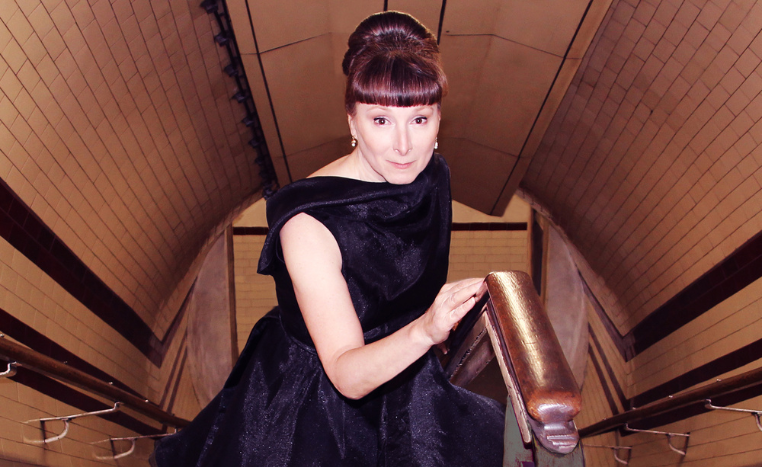Tangy and sweet, the notes float out as though scattered like a dandelion puff on a mountain breeze. Rooted in the classical acoustic guitar tradition, Mountain Aires gently carries new shades of the contemporary, bleeding softly through the strings. It’s the latest offering from UK composer and guitarist Esbe, a dreamy, escapist project that lets the guitar speak in its purest form.
For a time, Esbe recalls, guitar was seen as something of an outsider in the classical world.
“It’s not like being a violinist or a pianist… certainly guitarists, I think, often feel that they have to prove themselves even more to be taken seriously,” she says.
The contrast between classical and popular uses of the instrument, she notes, lies mainly in the training and approach.
“You are much more disciplined and use all your fingers in a very specific way. The music is more complicated. Obviously, you’re reading music. As opposed to passing chord charts and guitar tabs.”
Esbe began her formal training at a young age at the Royal Academy of Music in London, where she studied among pioneers of the guitar world. Much of the repertoire, she explains, is relatively recent.
“Because the guitar really only began to develop its repertoire in the 18th century, 19th century… it was quite small. So we play a lot of Bach transcriptions and 20th-century music… and people like Julian Bream and John Williams, who were sort of mid-20th century and later players, were very instrumental in developing the repertoire and commissioning composers to write for the guitar.”
Esbe studied with Hector Quine, a close friend of Bream’s, and eventually became a winner of the prestigious Julian Bream Prize.
“It was quite daunting, because you’re playing to the person who you’re aspiring to be and he would judge it.”
At the Academy, Esbe also took up voice as a second instrument—an interest that would later expand her creative palette.
“I just started singing, and I enjoyed singing in different styles,” she says. Among those styles are influences from India, the Middle East, and Eastern Europe.
“I’ve done a couple of tracks where I’ve multi-layered my voice with typical kind of Eastern European harmonies… I just like exploring different ways of using the voice.”
Creative evolution has been a constant in Esbe’s career. After graduating, she began releasing music that rarely stayed within one mold.
“Each album is a little bit different,” she explains. “I kind of feel that I’m going to write in a particular style, or… how I’m going to produce, and what the arrangements will be and that sort of dictates what I try. So I did an album called Saqqara, which is named after one of the oldest pyramids in Egypt.”
That inspiration came from a personal journey. “I just kind of try and absorb a little bit of what I hear, and use some of the scales, and just get into the mood of what it is, and hopefully it reflects it.”
Melody tends to be her starting point more than rhythm. “I love interesting chord progressions,” she says.
Her creative process is deliberate, but rarely stuck. “I probably only ever abandoned one or two songs… I kind of make them work or they flow, usually quite quickly, but I have gaps between recording and writing, so I think I’m always eager to kind of get on with the next thing.”
With Mountain Aires, Esbe made a conscious decision to let the guitar shine.
“I’ve used it a little bit on previous albums, but I wanted to do an album, and I did think it would be an instrumental album, rather than having any vocals on it… I just wanted to showcase what the guitar could do and how it could sound, sometimes just having two guitars, so perhaps a melody and some arpeggiated or chordal accompaniment, or having proper multi layers, you know, where there’d be maybe 20 different parts, 25 different parts playing.”
The resulting soundscape takes listeners from Mount Iwaki to Yosemite and the Lusatian Hills, evoking landscapes of sweeping, sometimes unfamiliar beauty.
While Mountain Aires is a project she’s proud of, Esbe’s creative momentum doesn’t allow for much rest.
“I always kind of feel a bit weird if I haven’t been recording for a while, I realize that I get a little bit sort of jittery. And then I think, ‘Well, why do I feel odd?’ And then I look back and think, ‘Oh, yes, because I haven’t written anything.’”
At the moment, she’s finishing a collaboration with art filmmaker Bill Jackson.
“He has been doing videos for each of the nine songs. I’ve got the ninth one to finish, and we’re planning to do some sort of video installation to show it.”
Another project—an album composed with a fellow musician—leans into the world of film music and is expected to release later this year.
Whether through voice or guitar, Esbe continues to blur the boundaries of genre and expectation—always reaching for something new, for the next chord or plucked phrase to emerge.







